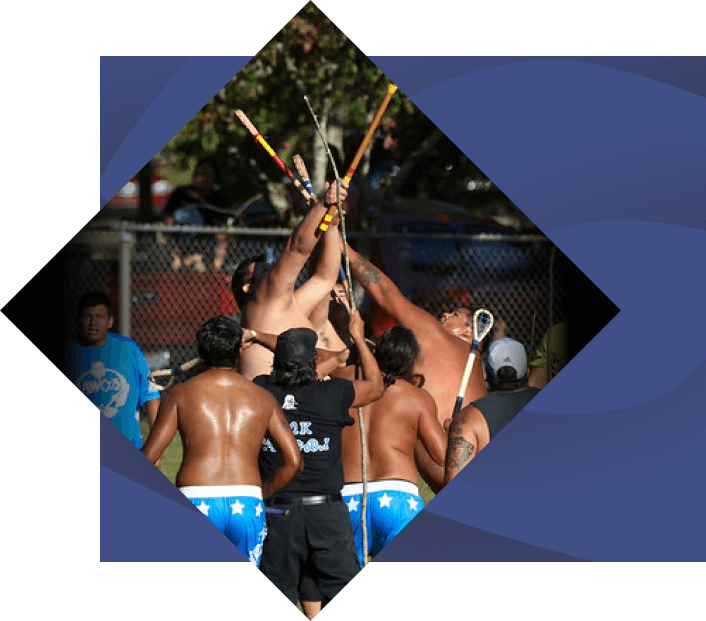Stickball
the Game Known as The Little Brother of War
a living cultural tradition
Stickball has always been much more than a game to the Cherokee people. Though once this ancient sport served a judicial or diplomatic function by settling tribal disputes before they led to war, today it’s a living cultural tradition. Stickball games are regularly played across the Cherokee Nation. Here in Western North Carolina, there are many opportunities throughout the summer and fall to watch teams made up of members of the Eastern Band of Cherokee Indians play the game.
Listen Closely — What You Hear Is More Than a Game.
These are the sounds of stickball. Once used to settle disputes and avoid bloodshed, today it remains a powerful cultural tradition. War calls before the game honor that legacy — a team announces, “We’re here, and we challenge you,” and the other responds, “We hear you, and we are here too.”


Rules of the game
Before you get the opportunity to watch stickball played live in Cherokee, understand the rules of the game.
If you look online, you’ll find that there are many different versions of stickball rules posted. For example, Choctaw stickball rules are different from those followed by the Eastern Band of Cherokee Indians.
More than that, according to Patrick Hill, a player for the Big Cove team, local rules can vary slightly from game to game. “It is always a different game when you play it. It is never the same,” he says. Because the rules can vary from game to game, even experienced players have to keep learning and practicing new styles of play. “We could practice one way but it is not necessarily going to be played that way. You’ve got to figure out ways to prepare for each game.” As a player, Patrick enjoys the fact that the game is always changing. When asked what his favorite part of stickball is he says, “learning how to play. I’m always going to be able to keep learning something new out there.”
Cherokee stickball
Though the sport of Lacrosse came from stickball, there many big differences between the two games.
For one, Cherokee stickball players do not wear any sort of padding or protective equipment. They don’t even wear shirts. Stickball is not a game for the faint of heart. We talked to Patrick recently to understand how the game is played today in Cherokee, North Carolina.


Passing On The Stickball Tradition
Like many stickball players in Cherokee, Patrick was first introduced to the game in childhood.
He was ten years old when he first started playing with a team at the Indian Fair. He has played off and on throughout his life since then with the team in Big Cove. Recently he has noticed a surge in interest in the game, especially from children.“We’ve gotten the kids involved…as young as three that come and run around.”
Patrick has greatly enjoyed learning and teaching stickball over the course of his life. He says that being a player has been “life changing at times” but that passing it along to the younger generations is what keeps bringing him back to the field. “Keeping it alive and respecting it is really what’s keeping me out there.” In fact, over the last five or six years, Patrick has noticed that many of the kids in Big Cove are more eager to play stickball than football, or soccer, or any other sport. “We’ve got the football coaches calling us and asking for kids… They are really into this sport.”
With no protective padding to wear, stickball can be an especially intense game for players of all ages. Patrick says that mental preparation before the game is necessary, but that each team knows exactly what they are getting into. “It’s called the medicine game and little brother of war. Each team has their own ways to prepare… When we go out there we are not afraid.”






